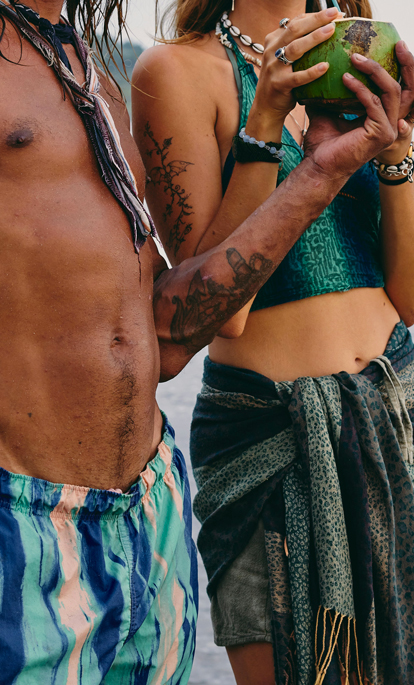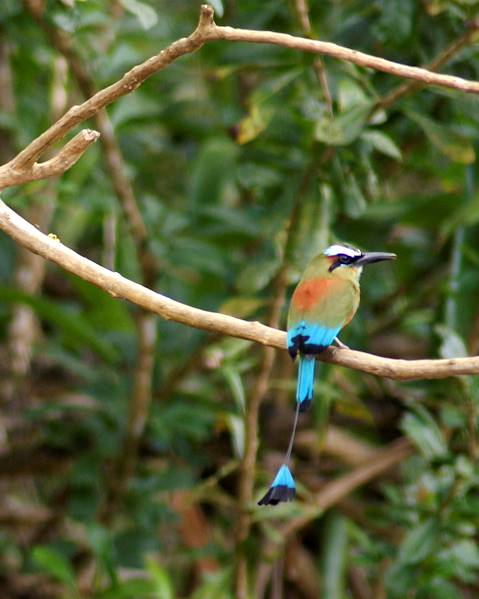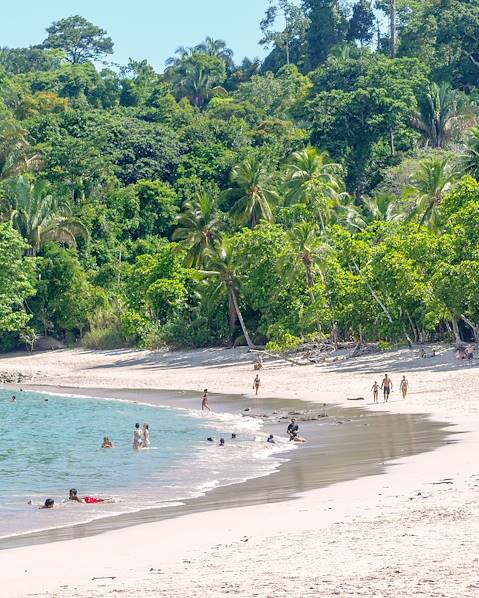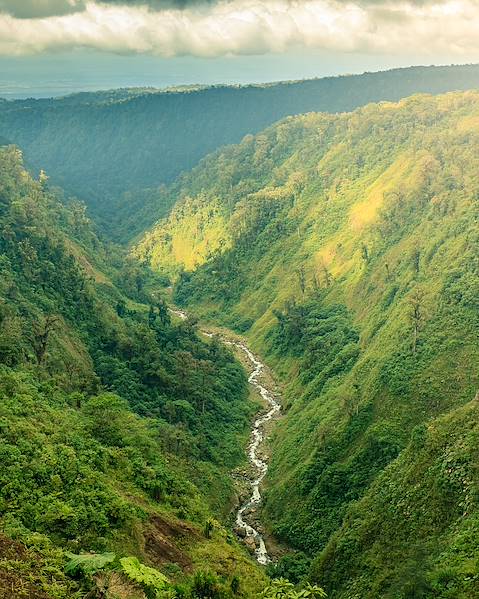Population of Costa Rica
5,069,144 inhabitants (2019).
Official language of Costa Rica
The official language of Costa Rica is Spanish.
Languages spoken in Costa Rica
90% of the population has Spanish as its first language. There are also original English-based Creole Jamaican and Indian languages (of the Cabécar, the Bribris, the Borucas etc) which are, unfortunately, fading out. Two immigrant communities maintain an autonomous language practice: the Chinese, who generally speak Cantonese Chinese, and Mennonites, who use a German derivative, Plautdietsch.
People of Costa Rica
The Costa Rican population is made up of 72% mixed race, 14% white, 10% black (often from Jamaica) and 2% American Indian (Guatusos, Bribris, Cabécaras, Térrabas, Borucas, Guaymíes); most of whom live in indigenous reserves. The mix of ethnicities living here all contribute to Costa Rica’s culture.
Religion in Costa Rica
Catholicism is the official religion and is practiced by the vast majority of the country, but there is an overriding tolerance to religion within Costa Rican culture; many Mormons, for example, live in San José.
National Holiday of Costa Rica
Costa Rica celebrates Independence Day on September 15th, to commemorate their independence from Spain in 1821.
Holidays in Costa Rica
- January 1: New Year's Day.
- March or April: Easter.
- April 11: Day hero Juan Santamaria.
- May 1: Labour Day.
- 25 July: Annexation of the Partido de Nicoya Festival.
- August 15: Assumption and Mother's Day.
- September 15: National Day.
- November 1: All Saints Day.
- December 25: Christmas.
History of Costa Rica
Before the Spanish colonisation, the first natives of Costa Rica were from the Mesoamerican and Andean cultures, leaving a legacy of crafts (pottery, jewellery and gold and jade carvings). During his last voyage in 1502, Christopher Columbus set foot on the island in Uvita (facing the current Puerto Limon), and named the country Costa Rica. The indigenous people were overpowered, agricultural settlements were established to take advantage of the sprawls of fertile soil and the favourable climate, and for the next 300 years, Costa Rica remained a colony of Spain. During this period, there were very few major events of note and the country remained sparsely developed. At the end of the 18th century, however, Spain began to monetise its investment and developed industrial crops: tobacco was introduced before coffee and bananas. This change of gear meant farmers saw renewed prosperity.
In 1821, Costa Rica joined a common declaration of independence from Guatemala, Honduras, El Salvador and Nicaragua. After a brief interlude as part of the independent Mexican Empire in 1821, the country, including San José, was integrated into the Republica Federal de Centroamerica (Federal Republic of Central America) in 1823. In 1838, Costa Rica gained full independence and built a stable republican system (with the national vote established in 1889). In 1856, Costa Rica resisted a bid by US William Walker to take over the government – a move which backfired for the American after a triumphant military operation in Nicaragua. Free and compulsory education was established as soon as 1869, then the next decade saw major industrial growth, from the banana trade to the railroad, and the United Fruit Company began in Costa Rica. The coastal areas were rapidly modernised and the country entered the fairgrounds of modern capitalism.
The 20th century was marked by two brief periods of violence, the dictatorship of General Federico Tinoco Granados (1868-1931), between 1917 and 1919, and a civil war in 1948. The latter had favourable consequences, however: the army was abolished and a new constitution was developed to ensure 60 years of political consistency for the Republic of Costa Rica.
Policy in Costa Rica
The Republic of Costa Rica is a presidential republic. The President (elected for four years by national vote, without the possibility of a second consecutive term in the first) is both head of state and government; so is fully responsible for the executive. The parliament (57 deputies elected for four years by national vote) holds legislative power. The Supreme Court is the highest court; the Constitutional Court reviews the constitutionality of laws.
Famous Costa Ricans
Recognised as a national hero in the country, Juan Santamaría (1831-1856) was a young drummer in the Costa Rican army, who fought against US foreign invader William Walker (1824-1860) in Nicaragua. His untimely and heroic death came after setting alight a hostel filled with the enemy – a move which contributed towards the Costa Rican victory of the Battle of Rivas. At the turn of the century, he was made a hero of national freedoms.
Maria Claudia Poll Ahrens (born 1972) is an exceptional professional swimmer and the country’s only Olympic gold-medallist, having won gold in the 200m at the Atlanta Olympics (1996) and a five-time world champion.
Max Jimenez (1900-1947) was an important novelist, essayist, artist and poet who had worked and studied all over Europe, Cuba and in New York. His work received great critical acclaim overseas, but was largely criticised back in Costa Rica.
Oscar Arias Sanchez (born in 1940), twice President of the Republic (1986-1990 and 2006-2010), was awarded the Nobel Peace Prize in 1987 for his role in the armed conflicts of the 1980s in Central America.
Etiquette in Costa Rica
Tipping is at your discretion. For all locals who work with us, you have our assurance that tips will never replace the salary. Nevertheless, tipping is very gratefully received. For drivers, we recommend around £1-£2 per person per day; double this amount for guides. At restaurants, 5% is usually automatically added to the bill. As for local staff (porters, waiters etc) tipping varies widely. It’s best to align your tip with the economy of the place: estimate the amount by comparing with the price of a beer or of a tea to ensure it fits with the standard of living. Always refrain from handing out money or items to people, especially children, in the streets as this encourages begging. Costa Rica is a peaceful country, but it’s wise to keep an eye on your personal belongings, particularly in San José and Limon – as in any other city. Costa Ricans are called ‘Ticos’ and ‘Ticas’ because of their unique way of saying diminutives in Spanish. For example, when saying something is small —or ‘chico’ in Spanish — Costa Ricans would say, it is ‘chiquitico’, or very small. Costa Ricans are generally very friendly and are always willing to help bewildered tourists.
Shopping in Costa Rica
Purchasing souvenirs can help support local communities and is a nice way of bringing a slice of Costa Rica’s culture home with you. Crafted oxcarts and decorated carts are sold across Costa Rica – but there are many miniature versions that are popular with tourists. Sculpted works are sold throughout the country, made from wood, clay and ceramic, as are weaves and leather work. Hammocks of all shapes and sizes can be picked up, and coffee is a must – in all its guises. Pick up some Lizano salsa to pep up dishes in your own kitchen – Costa Rican style. And, if you’re that way inclined, hand-rolled premium cigars from Costa Rica are smooth and silky.
Food of Costa Rica
Rice, black beans, coriander and sweet and acidic Lizano salsa feature heavily across restaurants and form a large part of the food culture in Costa Rica. Gallo pinto is the national dish – a hearty plate of rice and beans, eaten with fried eggs or meat depending on the time of day. One of the staple dishes of the Costa Rican foodie scene is the casado – which is essentially a heaving plate of rice and beans with a smattering of added fish, meat, coleslaw, fried plantains, avocado, tortilla or a veggie stew called picadillo. Ceviche is superb in Costa Rica – fantastically fresh seafood and fish ‘cooked’ in lime and onion with plenty of coriander. Chicken is widely available, but the country also produces a premium quality beef. For dessert, there’s tres leches – a super-sweet, very moist cake – and arroz con leche, a rice pudding with condensed milk and cinnamon. Bananas and fresh fruit are everywhere, too.
Drink of Costa Rica
In principle, the tap water here is drinkable, but it’s advised to drink bottled mineral water. Beer (often blonde and light, sometimes amber) is widely available, as are fizzy drinks. The fresh juices are delicious. Guaro is a liquor and high purity drink made from sugar cane; it’s often drunk with Fresca - a diet soda – and plenty of ice. Coffee is big business and an essential component of the culture in Costa Rica: the nation produces some of the highest quality Arabica in the world. For an insider’s guide into the national drink, book a fascinating tour of a coffee plantation.
















